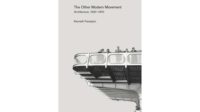Bitter Debate Brews Over Domino Sugar Plant

Debate Brews Over Domino Sugar Plant
Preservationists oppose plans to raze the Domino Sugar plant in Brooklyn to make way for residential towers, retail space and a park. While Rafael Viñoly Architects is developing the site's master plan, Beyer Blinder Belle is designing an addition to a landmarked structure on the property.
Image courtesy Rafael Viñoly Architects

Debate Brews Over Domino Sugar Plant
Preservationists oppose plans to raze the Domino Sugar plant in Brooklyn to make way for residential towers, retail space and a park. While Rafael Viñoly Architects is developing the site's master plan, Beyer Blinder Belle is designing an addition to a landmarked structure on the property.
Image courtesy Rafael Viñoly Architects

Debate Brews Over Domino Sugar Plant
Preservationists oppose plans to raze the Domino Sugar plant in Brooklyn to make way for residential towers, retail space and a park. While Rafael Viñoly Architects is developing the site's master plan, Beyer Blinder Belle is designing an addition to a landmarked structure on the property.
Image courtesy Rafael Viñoly Architects

Debate Brews Over Domino Sugar Plant
Preservationists oppose plans to raze the Domino Sugar plant in Brooklyn to make way for residential towers, retail space and a park. While Rafael Viñoly Architects is developing the site's master plan, Beyer Blinder Belle is designing an addition to a landmarked structure on the property.
Photo courtesy NYC Landmarks Preservation Commission


